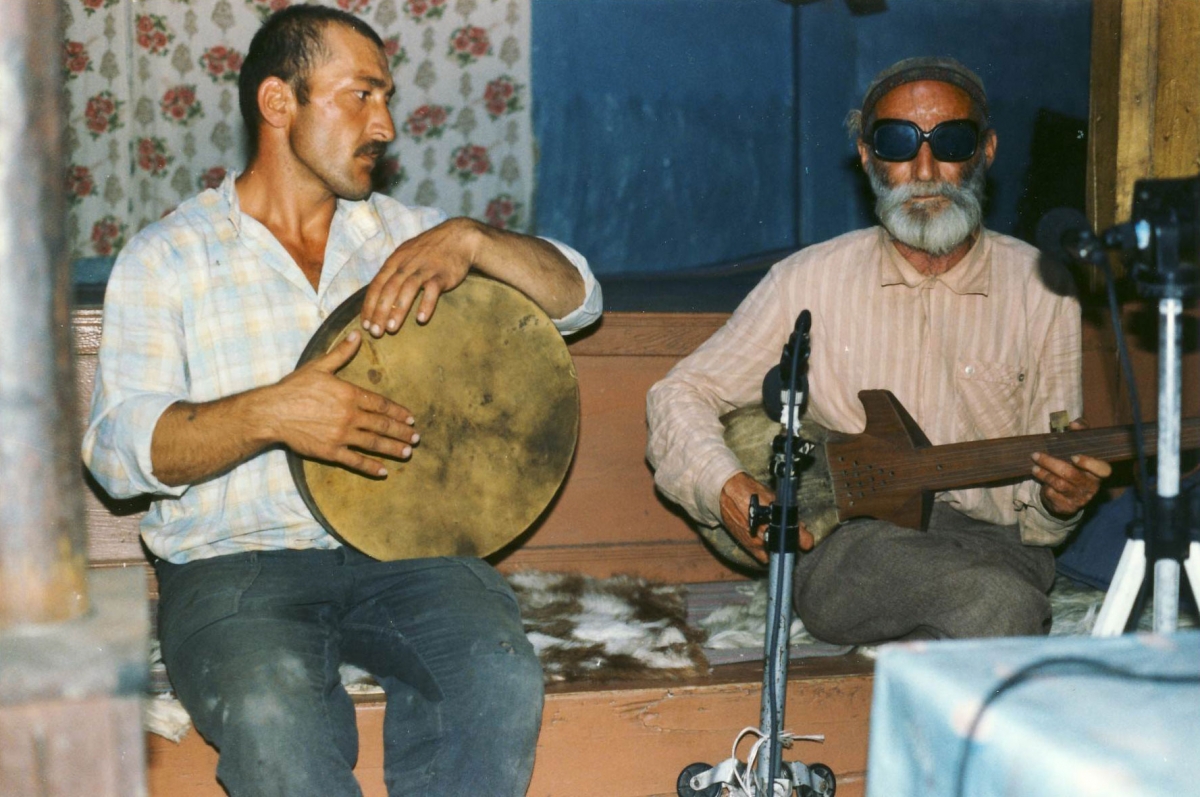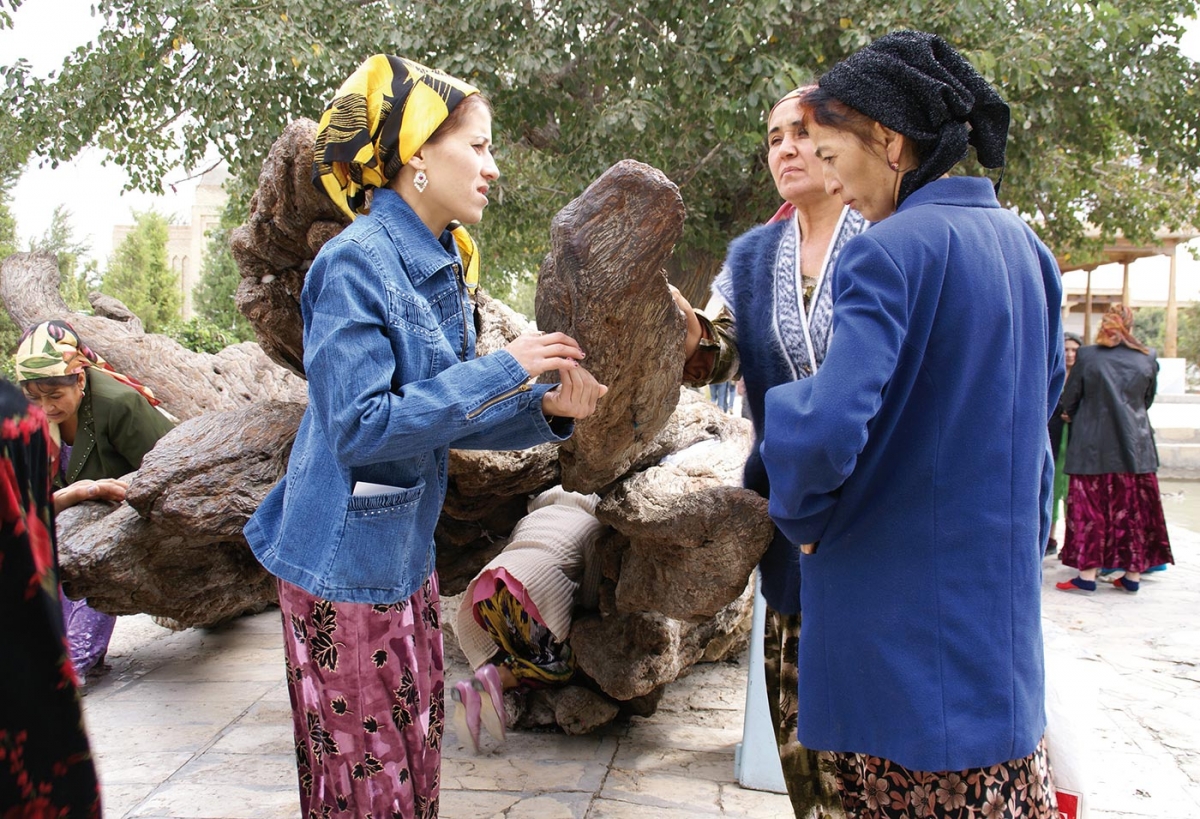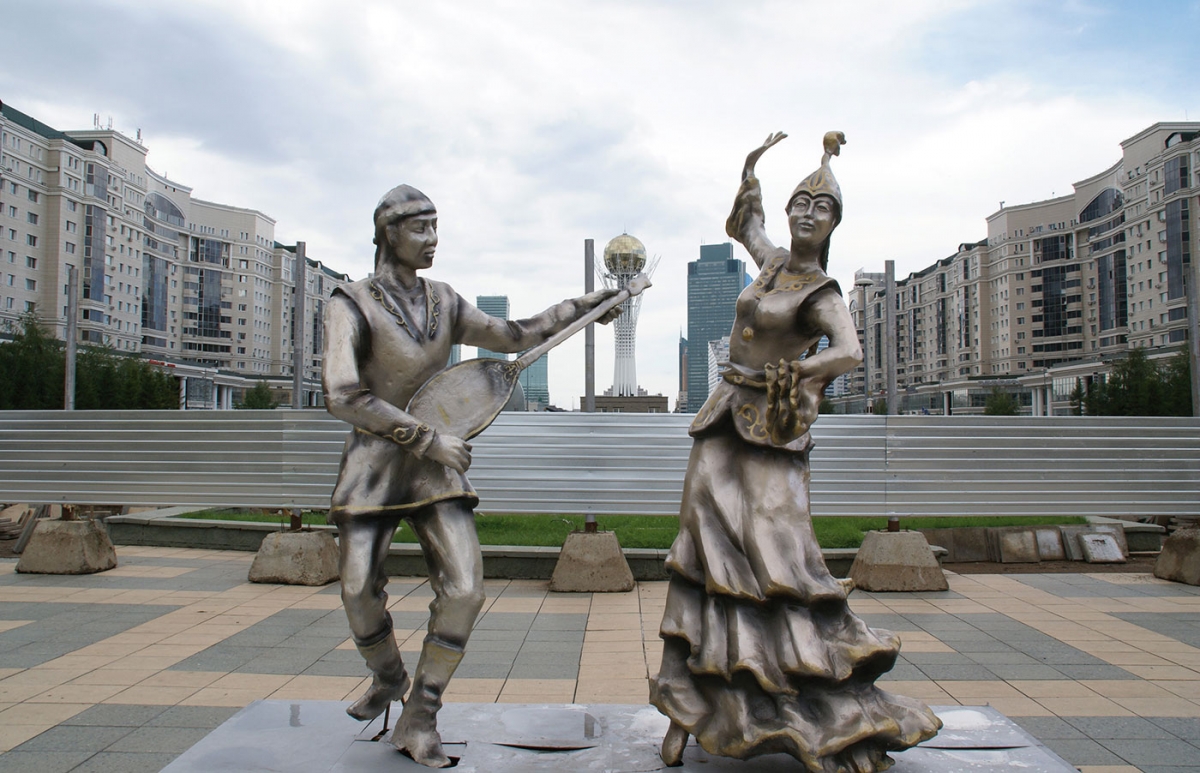Memory and commemoration in Central Asia
<p>Heritage sites and commemorative practices have become visual protagonists of a nationalist rhetoric in modern Central Asia. Central Asia is defined as the region encompassing the former-Soviet republics, in addition to Xinjiang, Afghanistan and Mongolia. This special issue analyses cultural memory practices used by former and current Central Asian elites as a tool for boosting ethno-nationalism. Aside from the restoration of powerful historical figures as national heroes (Chinggis Khan, Tamerlane), the value of cultural memory practices lies in the transmission of beliefs, storytelling and collective acts of cultural remembering. These new cults have become instrumental for creating urban monumentality on an unprecedented scale across the capitals of modern Central Asia. Heroic deeds represented in the historical epics of the region, such as the <em>Manas</em> and the <em>Shahnama</em>, or the performance of religious poetry in Badakhshan have been transformed into a powerful vehicle for expressing long-suppressed religious devotion. Multiple commemorative sites are deployed as visual representations of the past and are being used to foster a sense of belonging and national pride among the multi-ethnic population. How can these practices and local historical contingencies provide a better understanding of the search for national and religious identities in modern Central Asia? </p>
Heritage in Central Asia
“There is, really, no such thing as heritage”, states Laurajane Smith in her acclaimed book The Uses of Heritage (2006).1 According to Smith, heritage is an “inherently political and discordant” practice used by different interest-groups with varying degrees of legitimacy. The process of heritage-making entails various forms of conflict over the definition, ownership, and use of cultural attributes. Originally, a concept coined by the nation-state, heritage has become the object of intellectual reclamation by academics, activists and associations. Institutional and non-institutional social actors in Central Asia are increasingly involved in debating the legitimacy as well as the need to ‘safeguard’ different expressions of heritage. Furthermore, heritage is being used as a marketable commodity for the sake of tourism.
Analysing heritage and commemorative practices across Central Asia provides a prolific framework to outline the complexity of group identities often constructed as nationalistic narratives in this highly contested region. The most unexpected innovations and fusions of the world’s religions and material culture have taken place along the trade and communication networks of Central Asia. The artistic vibrancy of the empires that stretched from China to Byzantium was reflected in their cultural production. Their artistic excellence combined with exquisite decorum was the product of continuous exchanges, mixing and melding of traditions. The problematic definition of this multi-lingual and multi-religious realm, tucked away between Ural and the Hindu Kush and torn by the entrenched legacies of the greatest empires, from the Mongols through the Timurids and to the Ottomans, and later on between the Soviets and the Chinese, has not been fully explored. Comprehending the complex history of Central Asia by taking into account its dynastic historiographies and more recent nationalistic narratives is crucial for perceiving the current dynamics of this vast region.
To regard the culture and borders of Central Asia as a solid reality would be an anachronism. Nothing is solid in Central Asia, it is a multi-faceted cultural ecumene. The dynamic symbolic bond between the Turkic nomadism and the Iranian sedentary lifestyles, severed during the modern period, has resulted in denoting this frontier region as ‘barbaric’ and ‘uncultured’. Unfortunately, this approach has been effectively used to colonize Central Asia and has totally disrupted and suppressed its spatial and cultural relationships. The national delimitations of the 1920s and 30s, imposed by the Soviet regime, brutally cut across the ethnic, language and religious diversity of the Central Asian peoples. The presumed democratization of the 1980s did not result in any unity in Central Asia and both ethnic and religious tensions have only intensified. Subsequently, the Soviet and the post-Soviet governments have tried to legitimize the idea of a harmonious present, in which all ethnic and religious minorities share a common purpose of free co-habitation. This ideological attempt to subdue the diversity of Central Asia, and to transform it into a cultural diachronic unity, has resulted in the creation of a repository of state-defined cultural memory and religious practices. Currently, cultural memory is skilfully used as a tool for building national identity.
Any statement describing one’s culture as ‘original’ is a fallacy. In particular, Central Asian culture is inherently nuanced and mutable over time and space. That is why, during the Soviet period the study of folklore traditions was an indispensable part of Soviet ideology. It was an attempt to create a set of notions and examples of idealized, original traditions deprived of any religious associations. Furthermore, the folklorists were agents of this ideological programme created by the state. Constructed by means of governmental texts and vocabulary, the perpetuation of epic images and their politically-attributed connotations have resulted in a pantheon of salient heroes. Some of their charismatic legacies have survived the pre-Islamic Persian civilization, the glory of Islam and the drastic banishment of religion during the Soviet period. The narratives associated with them have resulted in the elevation of places of national fame. In an attempt to maintain peaceful dynamic interaction between multi-ethnic communities, heritage has taken on new and sometimes unintended meanings in the midst of social change, asserting religious identity and political upheaval. Nowadays, their legacy is drawn from within an officially imposed narrative that is alien to the majority of the population. Even though the presence of the heroic figures is commemorated with large statues dominating the cityscapes, their presumed permanence is based on estranged politicized narratives that most people do not want to be part of.
The artefacts across the vast Central Asian urban landscapes and steppes are material carriers of cultural memory. Although each ethnic group has its own distinct self-consciousness and self-identification, patriotic heroic tropes and in particular the glorification of the past have gained considerable public attention. Their elevation and veneration are being used to preserve the state’s vision of culture.
Commemoration practices across Central Asia
This collection of essays offers a broader understanding of the concept of common heritage and multiple identities across Central Asia. The studies show how cultural memory practices are used by the Tsarist, Soviet and contemporary post-Soviet Central Asian elites as a tool for boosting ethno-nationalism. Yet, this process is far from smooth and straightforward. Rather than focusing on a single genre, medium or language of literary production, the selection of articles takes a comparative and connective perspective. The authors propose different approaches – historical, literary, anthropological, critical heritage studies. They show that memory is an intrinsic constituent of identity formation. In search of a historical identity based on shared languages and culture, the aim is to map the interaction between political, ideological, literary and artistic production in a diachronic and synchronic perspective, and to contextualize the process dynamics through textual and material analysis.
The first contribution, by Zifa Auezova, discusses the painful legacy of the 1916 Revolt in Turkestan and the Steppe Regions of the Russian Empire, based on the 1928 novel Qily Zaman (The Time of Ordeal), written by the Kazakh author Mukhtar Auezov. The novel tells the story of a Kazakh clan in the Semirechye, which in 1916 had witnessed the violence of the Russian government to such an extent that fleeing from their land, from the realms of their ancestors, appeared to be the only solution. Drawing from the extensive family archive and her intimate knowledge of the author’s life, Auezova underlines the historical importance of the revolt. The uprising was a particularly sensitive issue for the Russian and Central Asian historians who had become Soviet citizens between 1917 and the 1930s and who had to maneuver within shared ideological frameworks defined by the new authorities.
The subsequent creation of national republics within the USSR necessitated the formation of nationalities policies, which resulted in constant appropriation and renegotiation of historical sources and themes. Artemy Kalinovsky shows how the creation of the Tajik national opera and ballet was a symbolic centrepiece of the Soviet policies in the 1930s. By professionalizing ‘traditional’ music, rather than creating professionals for Soviet Tajik culture, the opera showcased the USSR’s commitment to blending egalitarianism with respect for and promotion of high culture. By discussing the debates on the proper cultural forms for the new republics, and outlining the musical and literary sources for the new operas, Kalinovsky traces the tensions and contradictions of the Soviet experiment in Tajikistan.
Performed in state theatres by large ensembles of professional musicians, many Tajik music genres were taken out of their original, often ritual context during the Soviet period. In order to illustrate how these genres became part of a newly formed national music tradition, Gabrielle van den Berg draws our attention to the Ismaili community of Badakhshan (an autonomous region within Tajikistan). Badakhshani music, which had a more secular character, was also part of this process of ‘theatrification’. Yet, the religious poetry maddoh, as a devotional practice and a form of religious education, remained entirely outside it. After the Civil war (1992-1997), maddohkhoni acquired a new public dimension, with stage performances and local television broadcasts.
Drawing from the vast literary heritage of Central Asia, Nienke van der Heide describes how the history of the Manas epic has been used by political elites in Kyrgyzstan. The mythical forefather Manas and his companions are remembered as true ancestors who represent the pride of the present Kyrgyz nation. However, the first recordings of the Manas epic from the 1880s do not portray Manas as an ethnic Kyrgyz. Understood as folklore, oral epics formed an integral part of the Soviet nationalities policy aiming at the creation of a structure that was ‘nationalist in form, socialist in content’. By the 1930s, the Manas epic was connected to the effort of bringing literacy to the nomads in an attempt to view folklore as the expression of the deepest moral aspirations of the proletariat. Van der Heide concludes that Manas narration in its present-day context is as an act of commemoration of a nomadic, pre-socialist and pre-capitalist past. It is often understood within an ethno-nationalist framework, that provides narrators and audiences with a sense of ownership and agency.
In this line of great Central Asian ancestors, the medieval conqueror Timur (also known as Tamerlane) and his descendants created a complex aesthetic vocabulary based on their shared Turko-Mongol heritage. Yet this vocabulary was constantly replenished through a dynamic cultural exchange encompassing the vast territory of Central Asia, from Iran to China. My own article explores how the contemporary Uzbek state in a sense legitimizes its policies by ‘imitating’ the craftsmanship of the Timurid period, reviving the distinct Timurid visual morphology and visions of kingship. Furthermore, the Uzbek elite sets the tone for contemporary architectural production with Timurid monumentality articulated in the urbanscape of major Uzbek cities.
Mongolia is another state that aspires to material recognition of its policies through elevating the cultural and religious heritage of its great ancestors. Combining the recent ideological shifts in Ulaanbaatar with a critical reading of its cityscape, Orhon Myadar illustrates how Chinggis Khan has been appropriated as a symbolic narrative of the new political ideology. The figure of Chinggis Khan has been used as the foremost representation of Mongolian national identity through the state’s selective interpretation of history, in a state-driven process of forgetting or remembering.
Focussing on the urban heritage of Kashgar, the westernmost city of China and an important hub along the Silk Road, Tomás Skinner describes the recent processes of spatial cleansing and gentrification in one of the oldest and best-preserved Islamic cities in the world. Showcasing the importance of the Silk Road as the most significant economic, political and cultural exchange network between the Orient and the West, Skinner relates the shared Silk Road heritage to Xi Jinping’s initiative ‘One Belt, One Road’. China draws heavily upon the Silk Road narrative to assert its economic role across Central Asia. Skinner concludes that the development of Xinjiang’s cities, supported by the globalising Silk Road discourse, is being used to assimilate the Uyghur population into the Chinese nation, whereby Muslim ways of life and traditions are being disrupted. This has resulted in tight constraints on religious freedom, increased surveillance over Uyghur communities, and the bulldozing of the region’s dense historic urban centres.
These contributions address many of the key issues related to memory and commemoration in Central Asia. The interpretations offered by the authors are based on their long-term fieldwork and personal experiences. However, many more questions remain open. What will be the impact of recent state policies and governmental intrusions on the diverse cultural production of the region? How will the various legitimization projects in the Central Asian nation states resonate with the insecure political and economic situation in the post-Soviet realm? Will the promised prosperity and revival of the complex cultural exchanges vowed by the fabled Silk Road result in any democratic changes? The purpose of this collection is to raise the visibility of this vibrant and still widely unknown region among the wider academic and non-academic audiences.
Elena Paskaleva is a lecturer in Critical Heritage Studies at Leiden University. Her current research focuses on the material culture of Central Asia and in particular on the history and socio-political importance of Timurid architecture in Uzbekistan. At present, she is also involved as a post-doctoral researcher in an initiative to strengthen the study and teaching of Central Asia in Leiden. In 2014 she was an associate at the Aga Khan Program for Islamic Architecture at Harvard University. Her latest interests involve urban developments across Central Asia (elpask@gmail.com).
In order to promote Central Asian studies at Leiden University, the research cluster ‘Asian Modernities and Traditions’ created a platform for the study of Central Asia in its broadest sense, by uniting and consolidating existing expertise and initiating new international collaboration. Key issues are cultural space, identity formation, geopolitics and heritage. Two new course modules on Central Asia will start in September 2016 (www.centralasia.leiden.edu).


